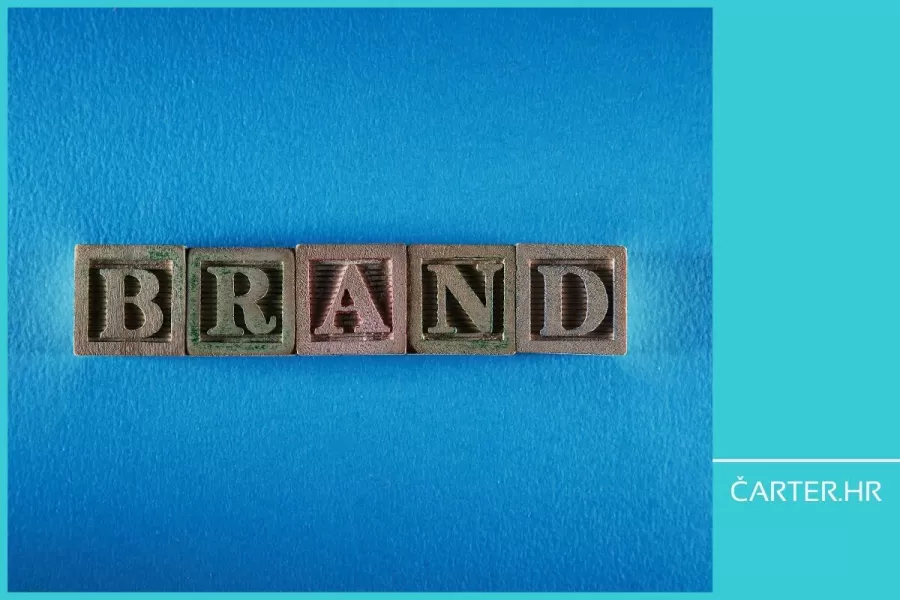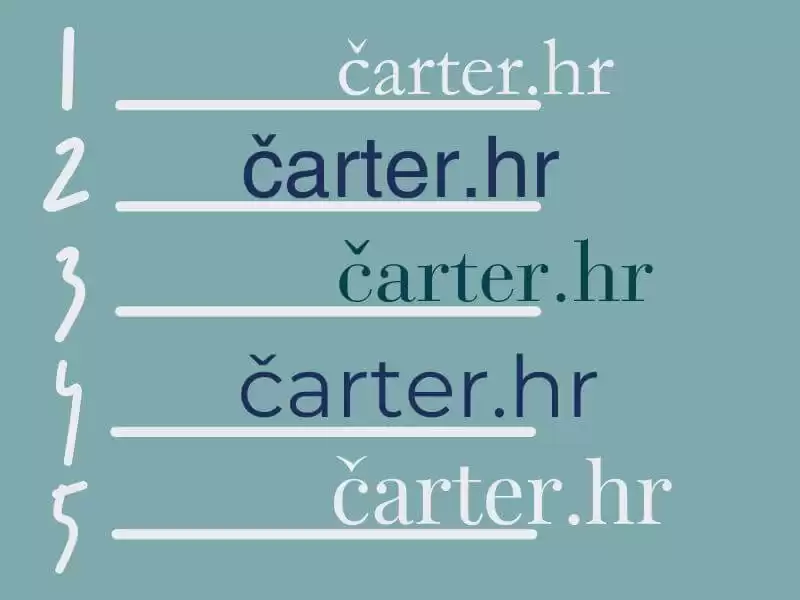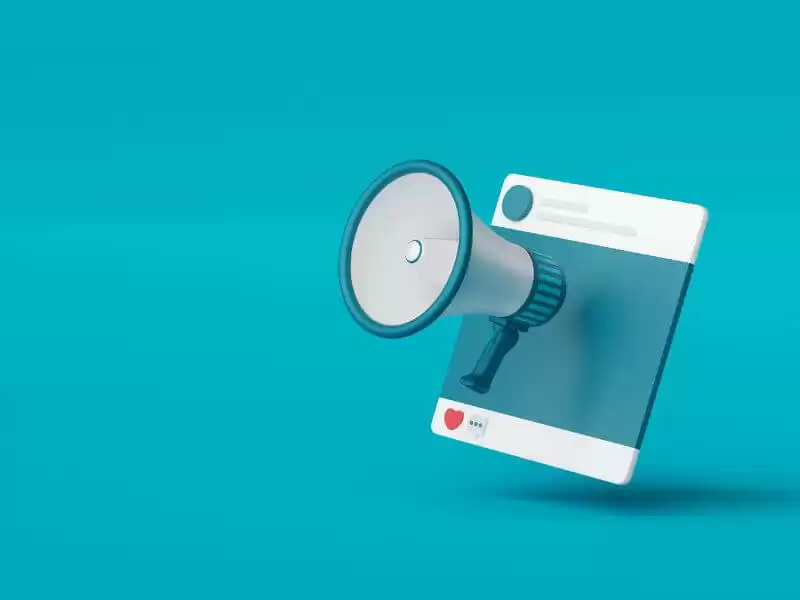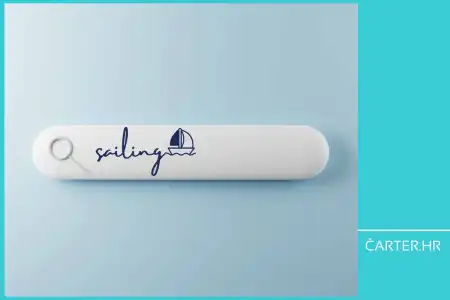
Do you understand the simple concept of how people book a yacht? Do you know people are actually “booking the feeling”? Do you know the best way to become a part of those feelings? It's the impression you give. It's branding.
The power of first impressions matter. This power is not to be taken lightly.
People need less than a second to decide about you. 1/10th of a second, to be exact.
These people also need 50 milliseconds to make a first impression of your website.
So, if it could be more visually appealing...
And as a yacht charter company - do you really want your impression to be that you are the same as everyone else. Or you want to be different and stand out.
In the competitive yacht charter market, a unique logo, colour scheme, and font aren't just some random elements; they signal your brand, your effort and values.
What is a brandbook, and why does your yacht charter need one
Yes, you should build an emotional connection. And yes, people are drawn to products and services for their functionality and for the emotional experiences they promise.
The concept is simple yet profound - people don't just buy products; they buy the emotions associated with them.
Emotion should be built from the start. A brandbook is essential as it ensures every representation of your brand is coherent, consistent, and reflective of your brand's identity, regardless of the setting.
A well-developed brandbook lays out the fine details of your brand's visual identity, such as specific colour schemes, typefaces, and logo placements, as well as your approach to communication.
This ensures that your guests, whether navigating your website, perusing a pamphlet, or directly communicating, experience a uniform and recognizable brand identity.
For a yacht charter company, it's essential to ensure consistency and convey your message across all touchpoints, such as:
- Company logo
- Specific colour palette
- Typography
- Photography
- Brand voice

Company logo - a well-designed logo goes a long way
A well-designed logo ensures your brand stands out in a crowded yacht charter market.
However, many fall into the trap of clichéd designs like yacht and sail icons, making them blend into a sea of sameness.
Go beyond. Embrace a distinctive design. Choose a logo that narrates your unique story, builds recognition, and fosters a strong, memorable brand identity that resonates with your audience.
For instance, your yacht charter logo can have a specific shade, which doesn't have to be shades of blue. But it must remain consistent throughout the entire brandook.
Colour palette – make your yacht charter stand out
Choosing a unique colour palette can significantly differentiate your brand in the sea of yacht charter's navy blue, blue, cerulean, turquoise, azure... etc.
However, there is nothing wrong with these colours. Still, there is always something called market saturation – almost every yacht charter has the same theme colours.
With the right colours, you can also create an unforgettable first impression and make sure your colour palette is consistent across digital and print mediums for a cohesive look.
With the colour palette, utilize the 60/30/10 rule for balance: 60% as the dominant colour, 30% for a secondary hue, and 10% for an accent colour.
This ensures a visually appealing brand identity, resonating exclusivity and balance across your entire yacht charter company.

Typography – make it elegant and readable
Typography, i.e. the fonts selected, should be stylish and easily readable to your audience for a seamless experience.
Choose fonts that can be used across various platforms, from your website to event invitations, ensuring a uniform and elegant aesthetic.
For your yacht charter, consider fonts that embody luxury while maintaining clarity, such as:
- Garamond (classic and timeless, perfect for printed material like brochures)
- Helvetica (clean option for website body text with excellent readability)
- Bodoni (ideal for headings with sharp contrasts that convey a sense of exclusivity)
- Montserrat (modern and versatile, great for digital interfaces)
- Playfair Display (high-class feel, perfect for invitations and event banners)
Photography style – reflects your brand's identity
Photography style is essential to your brandbook, setting the visual tone that reflects your yacht charter's identity.
Images used consistently across all marketing channels, from brochures to social media, help create a visual narrative that aligns with your yacht charter offer.
Focus on selecting high-quality images that evoke luxury and/or serenity, depending on your targeted audience, such as:
- Sunset photograps - capture your yachts against the backdrop of a stunning sunset, highlighting the elegance of the vessels
- Aerial shots - use drone photography to showcase your yachts and the expanse of the open sea
- Lifestyle images - incorporate photos of people enjoying amenities on board, creating an aspirational appeal
- Detailed close-ups - highlight the exquisite craftsmanship of the yacht interiors, focusing on unique features
- Nature-infused scenes - use images of yachts in crystal-clear waters or docked in secluded bays, emphasizing the connection with nature
Brand voice – define your yacht charter tone of communication
This section of the brandbook specifies a language that communicates the essence of your yacht charter.
Maintain an exclusive tone across all channels so your brand voice effectively communicates the high quality of your yacht charter service, strengthening your brand identity.
Your style should be tailored to resonate with your targeted audience, for example:
On the website: Use eloquent and refined language, focusing on the unique experiences and premium services your yacht charter offers. The layout, design, and content of the website ensure that visitors have a consistent and seamless experience.
In marketing materials: In brochures, business cards, and digital ads, employ a tone that speaks of exclusivity, highlighting the luxury and experiences on your yachts. This could include scripts for customer service calls or templates for email communications. All promotional materials, whether online or offline, must have a consistent look and feel that aligns with the brand's identity.
In social media posts: Even on more casual platforms, maintain a polished and engaging tone, showcasing the lifestyle associated with your charter. Ensure that interactions, whether via email or phone, are courteous and bespoke, mirroring the personalized experience guests can expect on board.
Event branding: You should have specific guidelines for how the brand should be presented at events, including the layout of spaces, the style of staff uniforms, and the presentation of promotional materials, ensuring that every aspect of an event reflects the brand's identity.
The ripple effect - branding and customer perception
One thing you must know is that the influence of unique branding on customer perception is substantial and far-reaching.
When executed well, branding doesn't just catch the eye; it shapes the entire narrative of your company in the minds of potential clients.
Distinctive branding can direct customer perceptions and choices, thereby attracting them to select your yacht charter, amongst others.
Examples of consistent branding that can influence your customer's perception are:
- Uniformed staff presentation - the crew that is uniformly dressed in branded attire enhances the perception of professionalism.
- Consistent social media aesthetics - regular, high-quality posts on social media reinforce the brand's image of luxury and reliability.
- Standardized customer service protocols - consistently excellent customer service builds trust and reliability.
- Branded merchandise - quality branded items, like custom yacht keychains or linen with your yacht charter logo, create a tangible connection with the brand.
- Well-maintained yachts - yachts should be in pristine condition, reinforcing the brand's commitment to quality.

Conclusion? Branding is not a mere accessory.
Competition in yacht charter is enormous, as you already know.
Reflecting on the points mentioned above, it's clear that branding is not a mere accessory to your business; it's a fundamental component.
It defines your identity, resonates with your audience, and steers your company towards an illustrious future.
Consider the impact of a yacht charter brand that has meticulously crafted its identity.
Such a brand doesn't just exist; it speaks, connects, and stays in the minds of its clientele.
A brand consistently communicating its commitment to personalized experiences creates a narrative that guests will trust. And they will remember your yacht charter as it distinguishes itself from the myriad of competitors.
If you require a brandbook that will be reflected in your marketing content, customer interactions, make sure to contact us.
For dependable news from the yacht charter world, subscribe to our newsletter.
Categories of trends
- News
- Sale
- Marketing
- SEO
- Web design
- Social media
- Technology
- Regulations
- Management
- Education
- Finances
- User experience
Newsletter
Sign up for the newsletter and receive the latest trends and tips straight to your inbox




